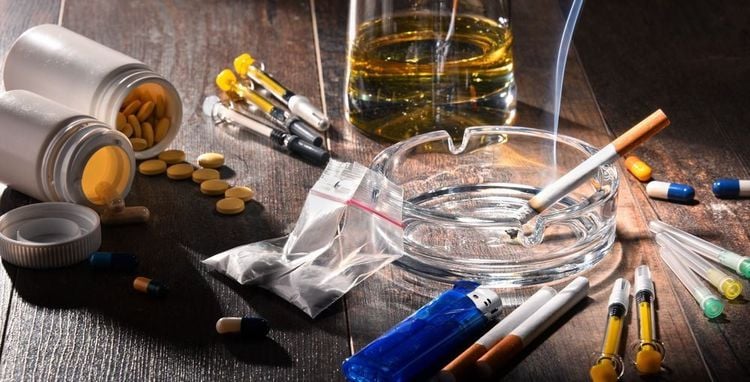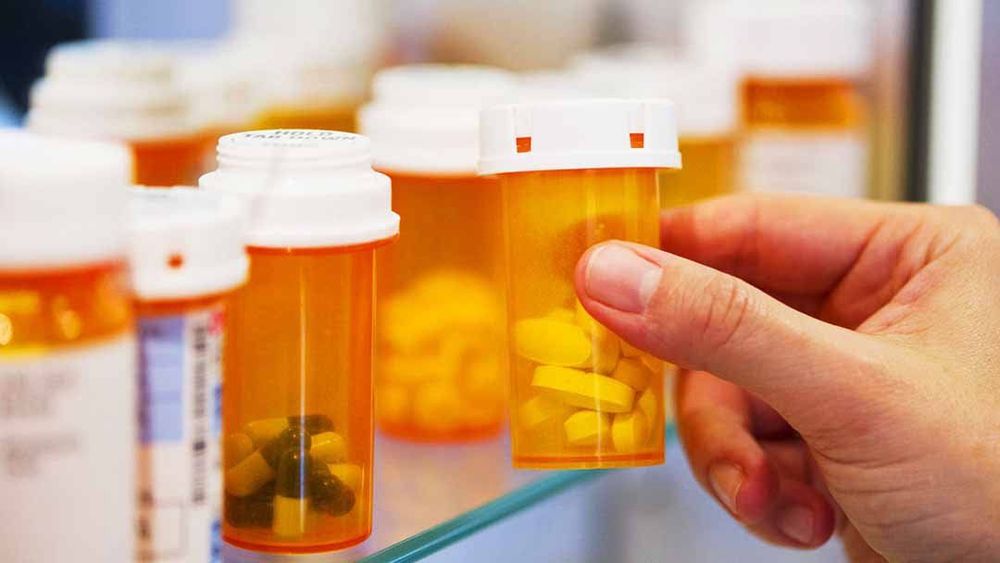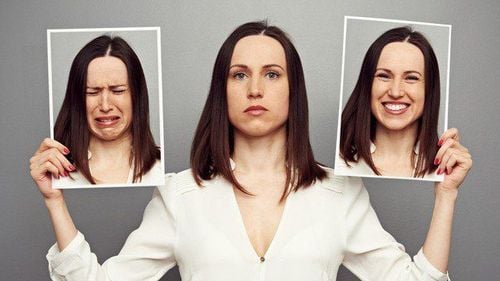This is an automatically translated article.
Bipolar disorder is one of the manifestations of mental illness. A common symptom of the disease is often an extreme change in the patient's emotions such as excessive excitement or depression. There are three types of bipolar disorder, bipolar I, II, and cyclical bipolar disorder. This article will focus on the content of bipolar I disorder.
1. What is Bipolar I Disorder?
Bipolar I disorder also known as manic or depressive disorder is a form of mental illness. People affected by bipolar I disorder will have at least one manic episode in their lifetime. A manic episode is a period of unusually high or irritable mood, accompanied by abnormal life-disrupting behaviors. Most people with bipolar I disorder also suffer from depressive episodes, but many are able to lead normal lives.
2. Who is at risk for bipolar I disorder?
Almost anyone can develop bipolar I disorder. About 2.5% of the US population has bipolar disorder, or nearly 6 million people. Most are in their teens or early 20s when symptoms of bipolar disorder first appear. Nearly all people with bipolar I disorder develop it before age 50. People who have family members with bipolar have a higher risk of developing the condition than others.
3. What are the symptoms of bipolar I disorder?
For people with bipolar disorder, during a manic episode they often have an elevated mood that manifests as euphoria or irritability. Abnormal behaviors during a manic episode include:
Sudden change of ideas from one idea to another. Fast, pressurized, loud voices Increased energy, hyperactivity, and reduced need for sleep Self-image inflated or exaggerated self-expenditure Hypersexuality Substance abuse

Lạm dụng chất gây nghiện là một trong các hành vi bất thường do rối loạn lưỡng cực gây ra
People in a manic episode may spend money beyond their means, have sex with people they don't want, or pursue unrealistic plans. During periods of severe mania, they may distance themselves from reality and may become delusional leading to bizarre behavior.
If left untreated, a manic episode can last from a few days to several months. Many people with bipolar I disorder go long periods of time without symptoms. A small number of people have cyclical manic and depressive symptoms, where they may have separate episodes of mania or depression four or more times within a year.
Depressive episodes in bipolar disorder are similar to those of typical clinical depression, with manifestations such as depressed mood, loss of pleasure, loss of energy and low activity, guilt or worthlessness , intending to commit suicide. The depressive symptoms of bipolar disorder can last for weeks or months but rarely for more than a year.
4. What are the treatments for bipolar I disorder?
Manic episodes in bipolar I disorder require treatment with medications such as mood stabilizers, antipsychotics, and sometimes sedatives including benzodiazepines such as clonazepam (Klonopin) or lorazepam (Ativan).
4.1 Mood Stabilizers Lithium (Eskalith, Lithobid) is a simple metal pill in pill form that is particularly effective in controlling mania associated with classical euphoria rather than a mixture of mania and depression. time. Lithium has been used for over 60 years to treat bipolar disorder. Lithium can take several weeks to take full effect. Patients taking lithium must have their blood lithium levels monitored as well as kidney and thyroid function tests to avoid side effects.
Valproate (Depakote) is an anticonvulsant used to calm mood, which works faster than lithium in treating acute manic episodes and preventing new episodes of mania. Valproate is a mood stabilizer that can be used starting at very high doses to work well and accelerate mood improvement within as little as four to five days of dosing. Some other antiepileptic drugs, especially carbamazepine (Tegretol) and lamotrigine (Lamictal) may also be of value in treating or preventing mania or depression. Other antiepileptic drugs are used less frequently but are still sometimes used experimentally to treat bipolar disorder, such as oxcarbazepine (Trileptal).
4.2 Antipsychotics For severe manic episodes traditional antipsychotics such as Haldol, Loxapine or Thorazine as well as newer antipsychotics (also known as atypical antipsychotics ) may be necessary. Cariprazine (Vraylar) is a newly approved antipsychotic for the treatment of manic or mixed episodes. Aripiprazole (Abilify), asenapine (Saphris), clozapine (Clozaril), olanzapine (Zyprexa), quetiapine (Seroquel), risperidone (Risperdal), ziprasidone (Geodon) are also commonly used in these cases. The antipsychotic drug lurasidone (Latuda) is approved for use alone or with lithium or valproate (Depakote), in cases of bipolar I depression. Antipsychotics are also sometimes used for prophylaxis.

Thuốc chống loạn thần cần được sử dụng theo đúng chỉ định của bác sĩ
4.3 Benzodiazepines This class of drugs known as minor tranquilizers includes alprazolam (Xanax), diazepam (Valium), and lorazepam (Ativan). They are sometimes used for the short-term control of acute symptoms associated with mania such as agitation or insomnia, but not for the treatment of core mood symptoms such as euphoria or depression. Patients may become dependent on the drug and should be closely monitored while taking
4.4 Antidepressants Common antidepressants such as fluoxetine (Prozac), paroxetine (Paxil) and sertraline (Zoloft) have been demonstrated. are ineffective as a treatment for depression in bipolar I disorder. In a small number of people, they can also worsen manic episodes in people with bipolar disorder. However, studies have shown that, for bipolar II depression, certain antidepressants such as Prozac and Zoloft may be safer and more helpful than bipolar I depression. Four treatments FDA-approved for bipolar depression is lurasidone (Latuda), olanzapine-fluoxetine combination (Symbyax), quetiapine (Seroquel), or quetiapine fumarate (Seroquel XR), and cariprazine (Vraylar). Other mood-stabilizing treatments that are sometimes recommended to treat acute bipolar depression include lithium, Depakote, and lamotrigine (Lamictal). If these are unsuccessful, the patient may be given a traditional antidepressant or another medication after several weeks. Psychotherapy may also be helpful in this case.
People with bipolar I disorder have a high risk of relapse and are often advised to take continuous medication for prevention.
4.5 Electroconvulsive Therapy (ECT) Electroconvulsive Therapy (ECT) is a safe and effective treatment for both manic and depressive symptoms. ECT is often used to treat severe forms of depression or mania in bipolar I disorder when medications may not be effective or medications are unlikely to work quickly enough to relieve symptoms.
4.6 Psychotherapeutic methods Psychotherapeutic methods of psychological stabilization are also considered as one of the effective methods of support for people with bipolar I disorder. Depending on the case, the patient may benefit from group psychotherapy or individual psychotherapy or support groups.
5. Is Bipolar I Disorder Preventable?
The causes of bipolar disorder are not well understood and it is not known whether bipolar I disorder can be completely prevented. But we can reduce the risk of manic or depressive episodes once bipolar disorder has developed. Through regular therapy sessions with a psychologist or social worker can help patients identify factors that may destabilize mood, such as poor medication adherence, lack of sleep, abuse. drugs or alcohol and poor stress management, etc. Taking medication regularly can help prevent future episodes of mania or depression.

Những buổi trị liệu thường xuyên với nhà tâm lý học sẽ giúp giảm nguy cơ mắc rối loạn lưỡng cực I
6. How is bipolar I disorder different from other types of bipolar disorder?
People with bipolar I disorder experience an entire manic episode. Their mood and behavior are abnormally high. These symptoms of mania can lead to serious life disruptions, such as overspending or an unwanted pregnancy. In bipolar II disorder, the symptoms of high mood never reach full mania. Bipolar II disorder is often followed by long-lasting severe depressive episodes and is often more difficult to treat than manic episodes that have never occurred.
For compulsive disorder, besides medication, psychotherapy also plays an important role, as this method is almost always used at all stages of the disease.
Currently, Vinmec Times City International General Hospital has a Mental Health examination with the function of examining, consulting and outpatient treatment of psychological and mental health problems, including compulsive disorder. With a team of highly qualified doctors combined with modern equipment, will bring the best treatment results to patients. Help improve their disease status, thoughts, behaviors and ability to maintain self-confidence, maintain their relationship with family and society.
Please dial HOTLINE for more information or register for an appointment HERE. Download MyVinmec app to make appointments faster and to manage your bookings easily.
Reference source: webmd.com












